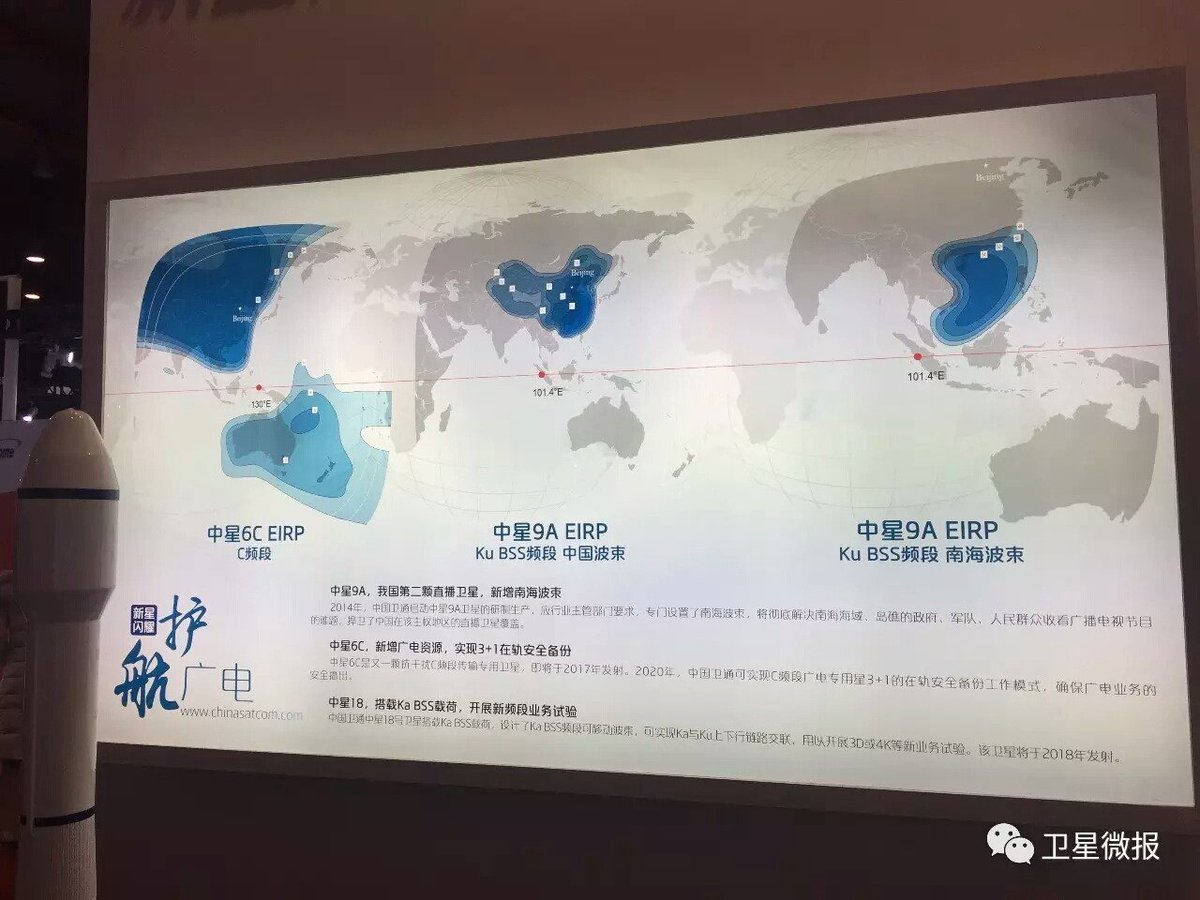After 10 orbital maneuvers, the ChinaSat-9A satellite is set at 101.4 ° E since July 5th. All systems are nominal.
China's Zhongxing-9A finally reaches intended orbit after partial launch failure
2017/07/06
A Chinese telecommunications satellite launched last month has reached its target orbit after a series of orbital adjustments. Zhongxing-9A had been left in a much lower than intended orbit by a launch issue.
The satellite was
from Xichang, but an issue with the third stage of the Long March 3B left the satellite orbiting at 193 x 16,357 km and inclined by 25.7°
The satellite used its own propulsion to perform 10 orbit adjustments and Wednesday reached its intended orbit at 101.4 degrees east longitude over the equator at an altitude of 36,000 km.
The satellite's systems and transponders are now operational and Zhongxing-9A has entered a period of on-orbit testing.
An investigation found that the launch issue was caused by an anomaly with the rocket's rolling control thruster, part of the altitude control engine, during the third stage.
The announcement was made on Thursday by the China Aerospace Science and Technology Corporation (CASC), the main contractor for the space programme.
The news is a boost following the
on Sunday, which was carrying the large Shijian-18 experimental satellite.
Shortened lifetime
The use of the satellite’s onboard thrusters, intended for station keeping, means the satellite will experience a greatly reduced operational lifetime. Thursday's announcement did not provide information on this.
Long Lehao of the China Academy of Launch Vehicle Technology (CALT), the space programme's rocket maker and a CASC subsidiary, told Science and Technology Daily days after launch that Zhongxing-9A
, but with a large cost in terms of life span.
In the now-deleted article, Mr Long predicted that the satellite could raise its orbit over a period of around 20 days, leaving ZX-9A with an operational lifetime of 5 years, rather than the designed 15.
First Chinese-made live broadcast sat
Zhongxing-9A is a Ku band telecommunications satellite based on the advanced DFH-4 satellite bus and developed by the China Academy of Space Technology (CAST), a subsidiary of CASC.
The satellite had a launch mass of just over 5 tonnes and is equipped with 18 36MHz and four 54MHz transponders, which will be used to provide radio and TV transmission, digital film and broadband and other broadcasting services to China, Hong Kong, Macau and Taiwan.
It is described by the
news agency as the first Chinese-made satellite for live radio and television broadcasts.
Zhongxing-9A is also known as ChinaSat-9A, using the English version brand name of satellites for China Satellite Communications Co. Ltd., a
of CASC.
China's launch schedule
China has been ramping up its launch rate, expecting to launch around 30 times this year following a
. The nature of the problem with the Zhongxing-9A launch means that it will effect plans to launch
and further telecommunications satellites with Long March 3B and C rockets.
The mission was the 40th launch of the Long March 3B, the first flight of which in February 1996
. Since then, the launch vehicle had suffered only one partial failure, when lofting
.
On
, underperformance of a Long March 4B third stage meant the Gaofen-10 Earth observation satellite failed to make it into orbit.
In
underperformance of a Long March 2D launch vehicle left two SuperView-1 Earth observation satellites in lower than intended orbits, which were later corrected.
On June 2, China's second heavy-lift Long March 5 rocket failed, leaving question marks over the country's plans to launch a lunar sample return mission,
, in late November, and potentially the construction of the
.

